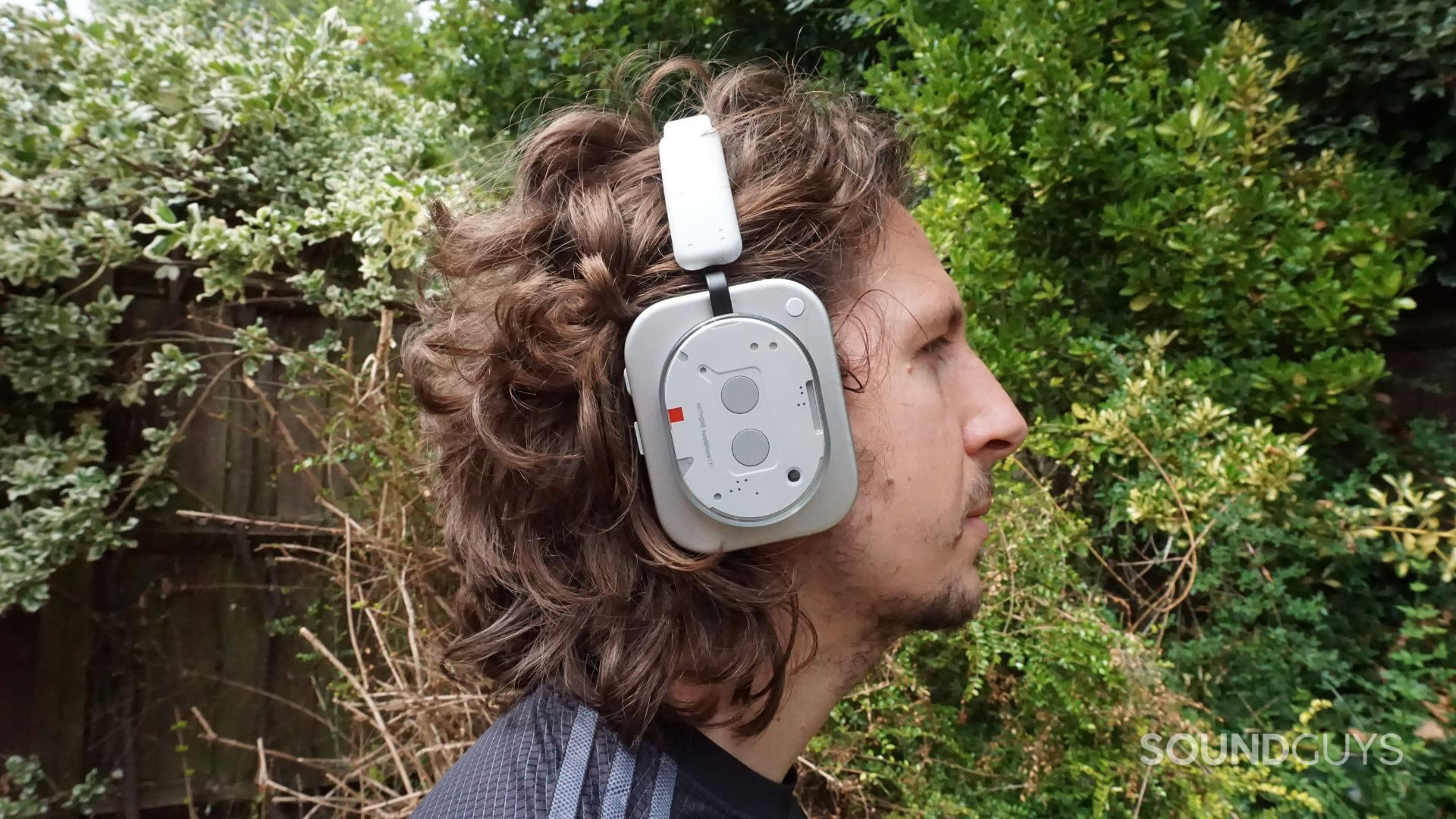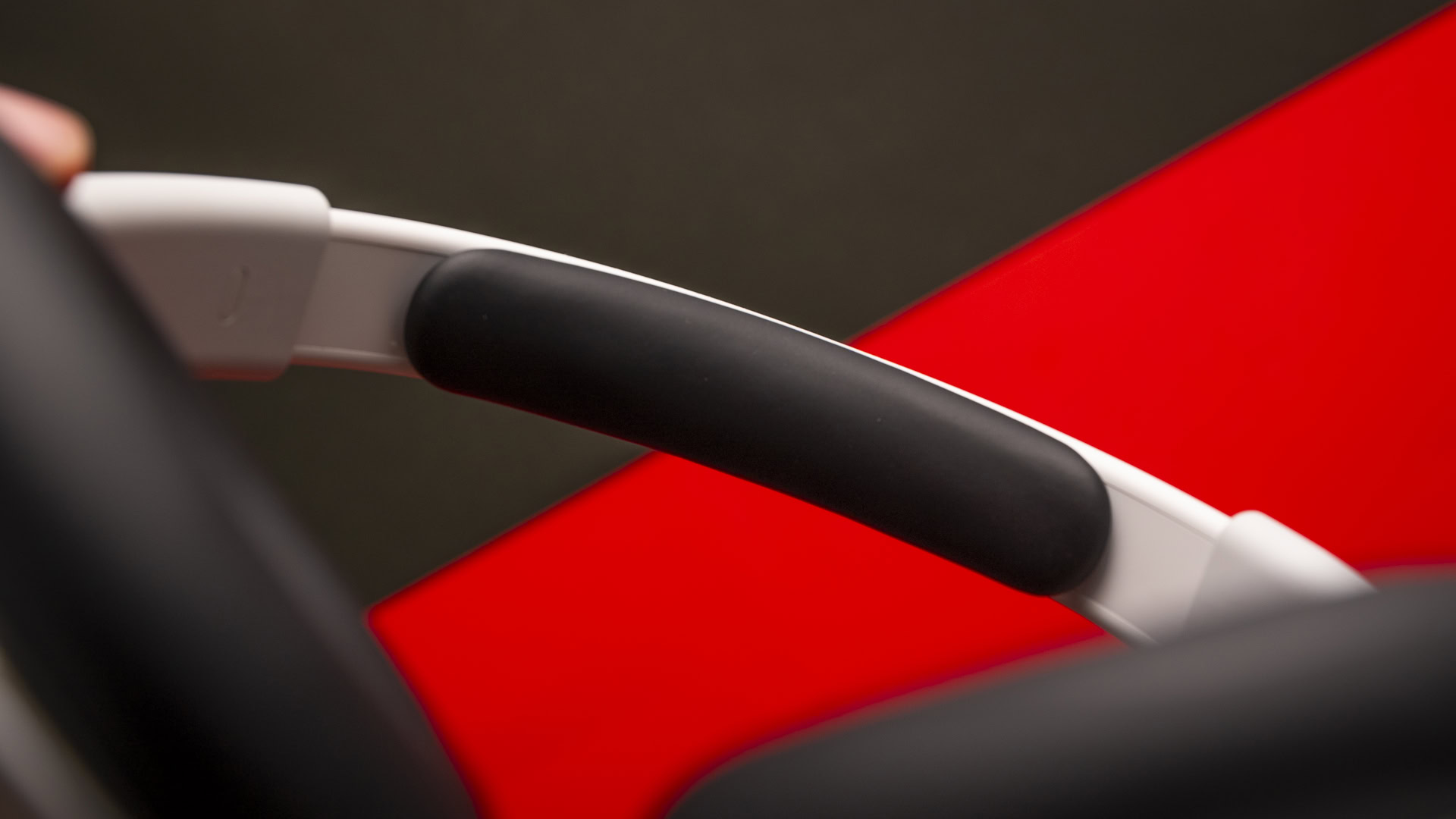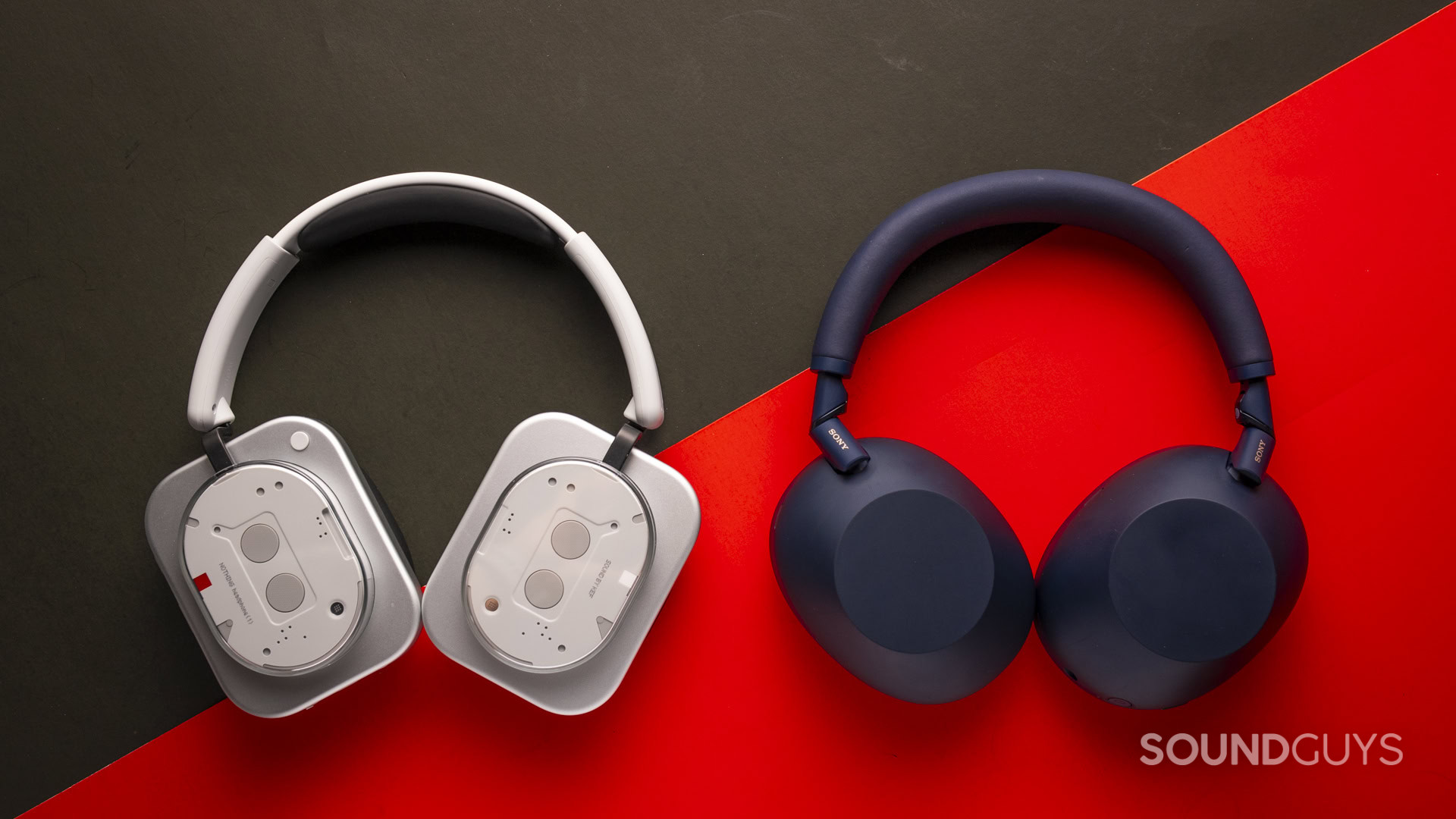All products featured are independently chosen by us. However, SoundGuys may receive a commission on orders placed through its retail links. See our ethics statement.
I uncovered a major issue with the Nothing Headphone (1)
August 12, 2025

The Nothing Headphone (1) have taken many at our office by surprise. Frankly, it’s not every day that you come across a pair of over-ear headphones with a refreshing control system that comprises buttons, a paddle, and a roller. Even less common is the addition of an IP52 water- and dust-resistant rating. Yet, despite their impressive feature set, I can only wear Nothing’s debut over-ear cans for an hour or two at a time. It’s not because I’m bored or unwilling; it’s because I can’t achieve a long-lasting, comfortable fit.
A statistical sore spot

Like many folks, I fall into the category of prioritising comfort above all else when hunting down my next pair of headphones. Besides, what’s the point in forking out hundreds of dollars for something that feels any less than premium? Now, that’s not to say that the Nothing Headphone (1) are made of cheap stuff. On the contrary, they use aluminium components and hard-plastic materials that feel well-made and robust in hand. The problem is that they are less equipped to accommodate different head shapes than rival brands.
For context, the circumference around my forehead measures 590mm. While that’s by no means extra large, it is approximately 37mm bigger than the U.S. national average of 553mm. For reference, this is based on a study on Microcephaly by the National Institute of Health (NIH). While the NIH found that head circumference is related to height, cerebral volume, and sex, a similar study by ResearchGate found that a person’s weight is also a factor.
Taller, heavier men may struggle to achieve a comfortable fit with the Nothing Headphone (1).
But it isn’t only tall, heavier men that may struggle to achieve a comfortable fit with the Nothing Headphone (1). For example, while my head circumference is 590mm, I’m only 1798mm tall and weigh roughly 65kg. This demonstrates that anyone, regardless of height, weight, cerebral volume, or sex, may struggle to fit Nothing’s debut headphones over their noggin. Where possible, we always recommend trying headphones before you buy them.
For balance, my colleague Adam Birney tested the Nothing Headphone (1) over five days. Unlike me, he found the cans comfortable to wear for long listening sessions during the review period. While this is by no means a comprehensive study like the ones above, it stands to reason that listeners with larger heads will likely find Nothing’s debut headphones more uncomfortable than those with smaller heads. But why exactly is that?
It’s all in your head(band)

The main issue I experience while wearing the Nothing Headphone (1) is that the headband does a mediocre job of distributing the headphones’ 329g frame. After a couple of hours of use, the top of my head forms a pain point where the headband padding meets my scalp. Sure, I can momentarily alleviate the pressure by repositioning the cans. However, this alters the seal between the ear cups and my ears. This is important, as a compromised seal around the ear can drastically affect sound quality and noise cancellation performance.
For example, loose-fitting headphones or on-ear headphones, like the Beats Solo 4, often suffer from a perceived lack of bass. This can make music sound like it lacks the oomph that most people enjoy. Likewise, environmental sounds are more likely to permeate your mix if your headphones do not fit snugly. Many over-ear headphones now feature active noise canceling (ANC) technology, but it works most optimally when the ear cups fully encompass the ear. Minor movements, like the ones I find myself making regularly with the Nothing Headphone (1), can quickly alter this.
Alleviating the Nothing Headphone (1)'s headband pressure can unintentionally alter the listening experience.
Don’t get me wrong — the Nothing Headphone (1) have ample ear cup padding. While the cups themselves may collide more than other brands due to their large size, the driver housing is well-protected. This means you won’t have to contend with any plastic parts poking your ears (I’m looking at you, Sony WH-1000XM6). It is worth mentioning, though, that Nothing’s over-ear headphones have a noticeably tight clamping force. Like the headband, this will feel particularly acute for those with larger heads. For example, I found wearing the cans over long periods induced ear fatigue and some excessive pressure around the ear.
The second problem I have with the Nothing Headphone (1) is that my long hair often gets in the way of the controls. These are located on the rear side of the right ear cup, and on the face of it, are more intuitive than touch controls. However, the roller struggles to detect my horizontal swipes when hair gets in the way. This is frustrating, as it makes it more difficult to adjust volume on the fly compared to tactile volume up/down buttons. Nothing’s reinvention of conventional headphone controls is welcome, but it doesn’t work as intended for those of us with longer hair.
You’ve Nothing to lose by weighing your options

With all that said, it’s worth considering the alternatives if you think the Nothing Headphone (1) may not suit your needs. Thankfully, the market is awash with comfortable headphones that are compatible with larger heads and longer hair.
For example, the Bose QuietComfort 35 II ($374 at Amazon) weigh 236g, have a slim profile, and wear a bendy, durable frame that forms to different head shapes. Like the Nothing Headphone (1), the Bose QC 35 II feature a multifunction button and separate volume up/down controls. These are located under the ear cups as opposed to at the rear. This should make it easier to conduct headphone commands if you have long hair.
Next up is the JBL Tour One M3 ($449.95 at Amazon). These cans feature a plush headband and ear cups with faux leather padding, providing comfort during extended listening sessions. The cans weigh 275g and, unlike the Nothing Headphone (1), the cups fold up for more efficient storage. The JBL Tour One M3 are controlled with a mix of physical buttons and a capacitive touch plate. Like the Bose QC 35 II, the Tour One M3’s buttons are found on the underside of each ear cup.
If you have the cash, the Bowers & Wilkins Px7 S2e are an excellent alternative to the Nothing Headphone (1).
If you have the cash, it may be worth grabbing the Bowers & Wilkins Px7 S2e ($399 at Amazon). While they may not feature a retro-inspired design, they are attractive headphones nonetheless. Their 309g feels well distributed across the headband, and the memory foam ear pads make it easy to forget you are wearing the cans at all. The fabric-covered headband has a pleasing sliding action, and the metal components feel sturdy in hand.
Another valid contender is the Bose Noise Canceling Headphones 700 ($379 at Amazon). Sporting a minimalist aesthetic, these headphones enjoy a sliding headband mechanism that makes it easy to find your ideal fit. The 254g frame feels well distributed, and the ear cups rotate 90 degrees to accommodate different head shapes. The headphones wear a sleek design and are easily controlled with three tactile buttons and a touch-sensitive gesture pad on the right ear cup.
But what do you think? Are the Nothing Headphone (1) comfortable for everyone, or are they best for those with short hair and smaller heads? Let us know in the poll below!
Are the Nothing Headphone (1) comfortable?
Thank you for being part of our community. Read our Comment Policy before posting.